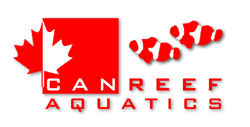
 |
|
#11
|
||||
|
||||
|
I heard switching to Celsius can mess with your ph in the salt mix, if not I'll gradually make the change slowly over time so the change doesnt impact the corals too much , they been on Fahrenheit for years now
__________________
........ |
|
#12
|
||||
|
||||
|
Can anyone recommend a good salt mix that uses ceclius only ?
I also use specific gravity which I'm thinKing if I'm switching to celsius I should go the whole 9 yards and switch to ppt?
__________________
........ |
|
#13
|
||||
|
||||
|
Reminds me of a conversation I had with an American dude... at one point, he said "Wuts wrong with y'all anaway, y'all got Celcius, but we got tempachur. Y'all need to swap over to tempachur"
So maybe try tempachur? |
|
#14
|
||||
|
||||
|
Celciheit?
__________________
........ |
|
#15
|
||||
|
||||
|
Side note I have 4 temperature monitors....they all read a degree difference so I'm in good range of 77 to 81
False alarm thanks folks 
__________________
........ |
|
#16
|
|||||
|
|||||
|
Quote:
I also use ppt, because I'm right brained and see the right side of my refractathingy first. I find that pt works better, since I run my tank in celcius.
__________________
Brad |
|
#17
|
|||||
|
|||||
|
Quote:
__________________
100 Gallon Reef, 2 x 250 Watt HQI Giesseman 13000K, Reeflo Dart(3600 gph), E.T.S.S Reef Devil Deluxe, Ocean Clear 325 filter, Aqua UV 25 watt, Korallin Calcium Reactor C-1502 |
|
#18
|
|||||
|
|||||
|
Temperature IS important.
From the article I posted: The most rapid growth of most corals is generally around 27°C to 29°C (80.6°F to 84.2°F) (Barnes et al., 1995; Clausen and Roth, 1975; Weber and White 1976; Coles and Jokiel, 1977, 1978; Highsmith, 1979a, b; Highsmith, et al., 1983). and.. A recent study shows how differences of only a couple of degrees Celsius determine the distribution of Montastrea annularis populations in the Gulf of Mexico and in the Caribbean Sea, proper ( Carricart-Ganivet, 2004 ). In this case, the no growth lower limit of zero calcification occurred at 23.7°C (74.7°F) in corals from the Gulf of Mexico and at 25.5°C (77.9°F) in corals from the Caribbean Sea.
__________________
Mitch |
|
#19
|
|||||
|
|||||
|
I run at 80 degrees. Some of my Zoas close at 82. Not sure if it's just me, or anyone else has seen a physical response from a small difference in temp?
__________________
- Jordon |
|
#20
|
|||||
|
|||||
|
Never been to the Gulf of Mexico or Caribbean & I'm trying to convert my critters to more northern latitude conditions. Depending on which of my 3 or 4 thermometers I look at, I'm running at a cool as a cucumber 23.7 to 24.7 degrees C. My montipora cap doesn't seem to care about slow growth statistics published by very well educated scientists, it insists on growing like the dickens. Not sure I want my coral to grow too fast anyhow, my little box full of water has only so much space! The fish aren't hibernating either. Perhaps it's the elevated dissolved oxygen level that goes with running so cool? My critters are all on an oxygen high! Anyhow, works for me & I save a bit of electricity. I wouldn't recommend anyone with valuable sps to start experimenting with temps at the low end of the scale though.
__________________
Mike 77g sumpless SW DIY 10 watt multi-chip LED build Last edited by mike31154; 01-04-2015 at 11:14 PM. |